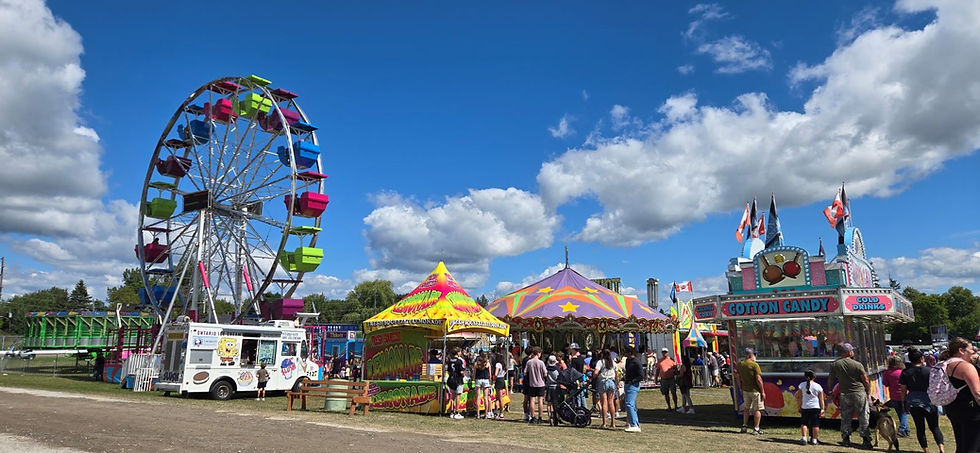That time of deer again
- Colleen Green
- May 13, 2022
- 2 min read
The fawn pictured below was seen by The Standard’s James J. Green, Monday, May 9th, on the side of a road in Kawartha Lakes.
He sent us the photo so we could let others know that this is normal and what to do if you see one.
According to Dave’s Garden, people sometimes find a healthy newborn fawn in their yard. If they don’t see the mother, they might think the baby has been abandoned and needs help. This is usually not the case.
Fawns are normally born sometime between late April and early July. Does birth one, two or occasionally three fawns. Finding one alone presents a situation when what not to do is as important as what to do. If you find a fawn, don’t move it. A mother doe will put her baby in a place she thinks is safe, usually in tall grass, near a tree or bush, or sometimes near a house. What seems safe and hidden to her at dusk or dawn may not be safe once humans, pets, and cars start moving about. She will nurse her baby, stimulate it to eliminate and clean that up so there is no scent. The doe will then leave the baby alone because she knows her fawn does not have any scent for the first few weeks of its life. However, she does. If she stays with her baby, her scent will attract predators. So she leaves it alone for hours at a time. She may return in the middle of the day, but most often returns at dawn and dusk and will usually move the fawn to a new location.
So if you see a fawn alone and it doesn’t appear injured, leave it alone. If it is still there 24 hours later call animal control and they will come pick up the animal.






무료카지노 무료카지노;
무료카지노 무료카지노;
google 优化 seo技术+jingcheng-seo.com+秒收录;
Fortune Tiger Fortune Tiger;
Fortune Tiger Fortune Tiger;
Fortune Tiger Slots Fortune…
站群/ 站群
gamesimes gamesimes;
03topgame 03topgame
EPS Machine EPS Cutting…
EPS Machine EPS and…
EPP Machine EPP Shape…
Fortune Tiger Fortune Tiger;
EPS Machine EPS and…
betwin betwin;
777 777;
slots slots;
Fortune Tiger Fortune Tiger;
google 优化 seo技术+jingcheng-seo.com+秒收录;
谷歌seo优化 谷歌SEO优化+外链发布+权重提升;
Fortune Tiger Fortune Tiger;
Fortune Tiger Fortune Tiger;
Fortune Tiger Fortune Tiger;
Fortune Tiger Slots Fortune…
gamesimes gamesimes;
站群/ 站群
03topgame 03topgame
betwin betwin;
777 777;
slots slots;
Fortune Tiger Fortune Tiger;
google seo google seo技术飞机TG-cheng716051;
03topgame 03topgame
Jogos JOGOS
Fortune Tiger Fortune Tiger;
Fortune Tiger Slots Fortune Tiger…
Fortune Tiger Fortune Tiger;
EPS машины EPS машины;
Fortune Tiger Fortune Tiger;
EPS Machine EPS Cutting Machine;
EPS Machine EPS and EPP…
EPP Machine EPP Shape Moulding…
EPS Machine EPS and EPP…
EPTU Machine ETPU Moulding Machine
EPS Machine EPS Cutting Machine;
谷歌seo推广 游戏出海seo,引流,快排,蜘蛛池租售;
Fortune Tiger Fortune Tiger;
Fortune Tiger Fortune Tiger;
Fortune Tiger Fortune Tiger;
Fortune Tiger Fortune Tiger;
Fortune Tiger Slots Fortune Tiger Slots;